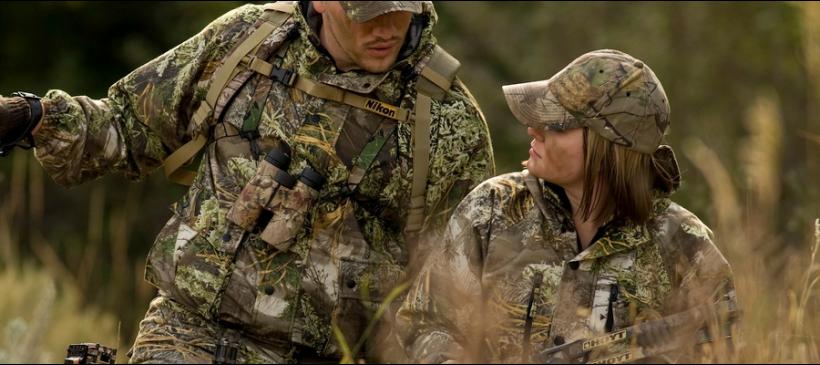3 ways to market to the youth hunting movement
- July 5, 2016
- By Adam Preston
- Marketing

Realtree Outdoors is celebrating 30 years in the hunting business, but you don’t need to be that old to have founder Bill Jordan’s famous line ringing in your ears:
“That’s it for this week, folks, until next time, be sure to take a child hunting or fishing so they too can enjoy the outdoors.”
Jordan (and other members of Team Realtree) religiously ended the TV shows and videos with that call-to-action. In many ways, he was a visionary, because even back in the 1980s, he knew the great outdoors lifestyle was facing some steep challenges. Recent research indicates these challenges remain, but — as noted in Part 1 of this blog series on women and youth hunting participation rates — there are enough bright spots to be cautiously optimistic about our future.
Several signals of brighter days ahead are revealed in a recent nationwide study conducted by Responsive Management and the National Shooting Sports Federation. The research was underwritten by a grant from the U.S. Fish and Wildlife Service, and the results were published in “The Future of Hunting and the Shooting Sports.” Among the highlight statistics concerning our youth were:
- 14% of youngsters (ages 12 and over) had hunted in the past five years but not in the past two years (churn rate). More on this in a moment.
- Of America’s 14 million active hunters, 1.6 million are ages 6 to 15.
- The most influential hunting demographic are 18-34 year-olds.
At face value, none of those statistics are overpowering. However, they become more meaningful — and positive — when you peel back the layers and study the circumstances surrounding them.
The United States has a “churn rate” of 37 percent when it comes to all hunters (of all game species). The churn rate is the number of people who have hunted at some point in the past five years but not in the past two years. The rate, however, drops to just 14 percent for young adults and nearly half that for children.
Therefore, with a churn rate of nearly one-third the adult figure, youth hunters are a much more attentive audience and, hence, more impressionable. Using this data, we can easily identify three areas where mature hunters can help maintain the hunting lifestyle for future generations:
1. Stop Ignoring Them
According to the Responsive Management study, three common characteristics are shared among “inactive” youth hunters:
- They have a true desire to go hunting.
- They have family members who are active hunters.
- They have friends who are active hunters.
It takes work (and sacrifice) to allow a youth hunter to take your place in the ground blind or tree stand, but the effort put forth now will undoubtedly pay dividends years from now.
2. Get Them Shooting
According to the report, analogous to hunting, shooting recruitment is helped by a shooting culture. People who have friends and family who shoot and who grew up in a household that contained firearms are more amenable to shooting recruitment efforts.
Most of the questions in the NSSF study understandably centered on firearms and gun-hunting, but the overwhelming consensus among respondents is that inactive youth hunters show a true fondness toward practice shooting at gun ranges. Archery shooting participation was almost equally as high among the bowhunters surveyed.
It doesn’t require expert analysis to conclude simple days at the range will further solidify a youth hunter’s desire to stay with the hunting lifestyle. They might not go hunting this fall, but all of those days spent at the range shooting at clay targets — or flinging arrows at 3D deer targets — will fill in the gaps until they find the time and opportunity to head afield.
3. More than Deer
Whitetails are the big drawing card among hunters, and the researchers confirmed that in this study. They estimate that 79 percent of all youth hunters consider themselves deer hunters first and foremost, with turkeys, upland birds and small game (rabbits and squirrels) rounding out the list.
It is the cool and “in” thing to do — take a kid hunting for the first time and have them shoot a deer over a food plot. It makes for great memories and an instant taste of success that today’s society almost dictates. However, lasting impressions (and just plain impressions for that matter) are often more easily made with in-the-field experiences offered by the other game species.
Take-Home Message: Pay it Forward
The top reason that active hunters or shooters gave, when asked to choose among six reasons that they hunt/shoot, is for fun and recreation (40 percent of active shooters). Among the reasons they didn’t: time, equipment and hunting land access.
Introducing someone to hunting is fairly easy. Nurturing their steps along an outdoors lifestyle takes work. Most importantly, it takes a community to build future community members. If you want to make a difference not only in someone’s life but your pastime’s future, don’t view hunting recruitment as a one-time act of public service. Instead, adopt a pay-it-forward attitude. Maybe you only provide the hunting land access. Maybe you donate your old arrows or camouflage to a buddy’s child. Or maybe you volunteer for a Saturday at the gun range.
Every little bit — no matter how small it may seem — will help keep the hunting lifestyle alive and healthy.
